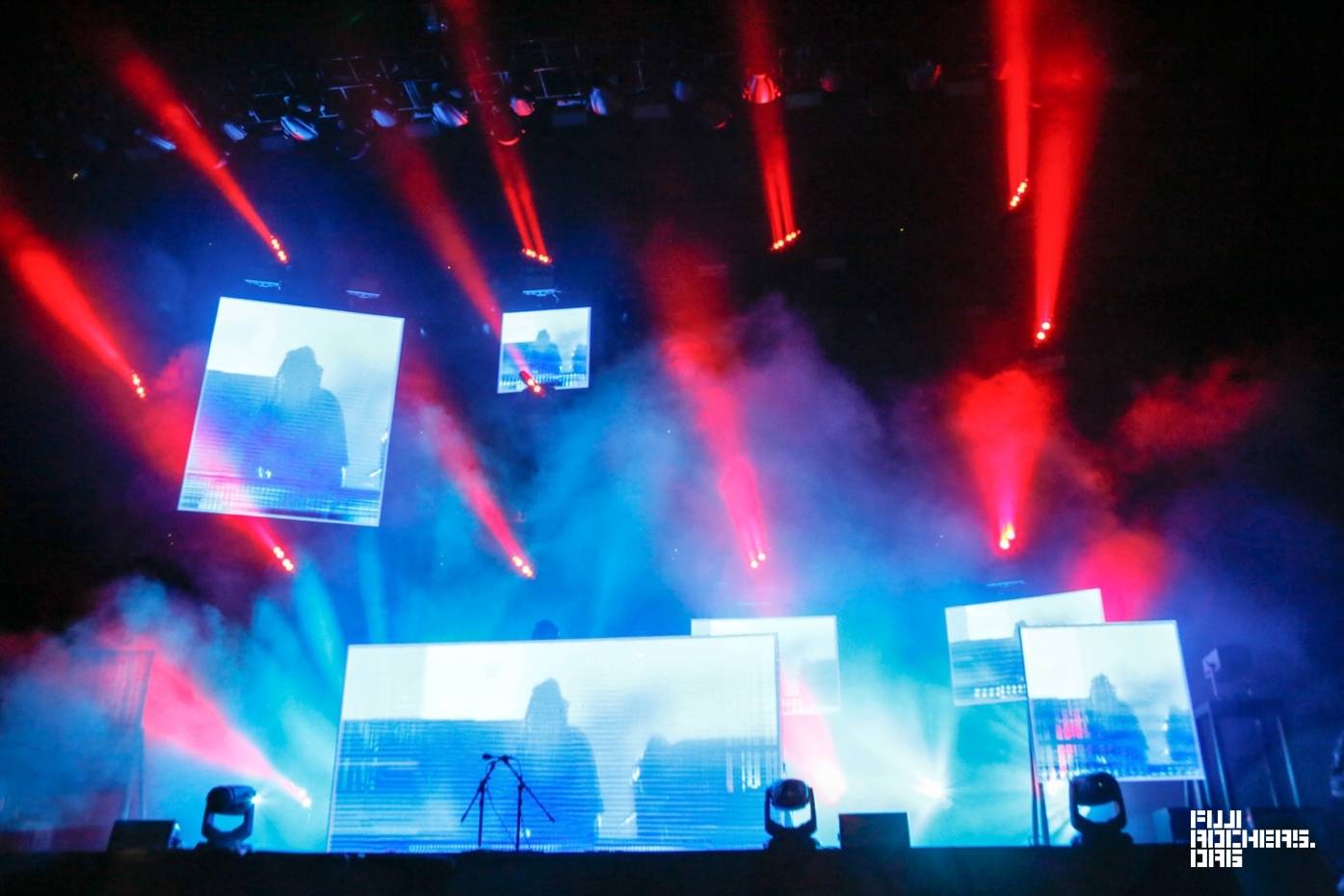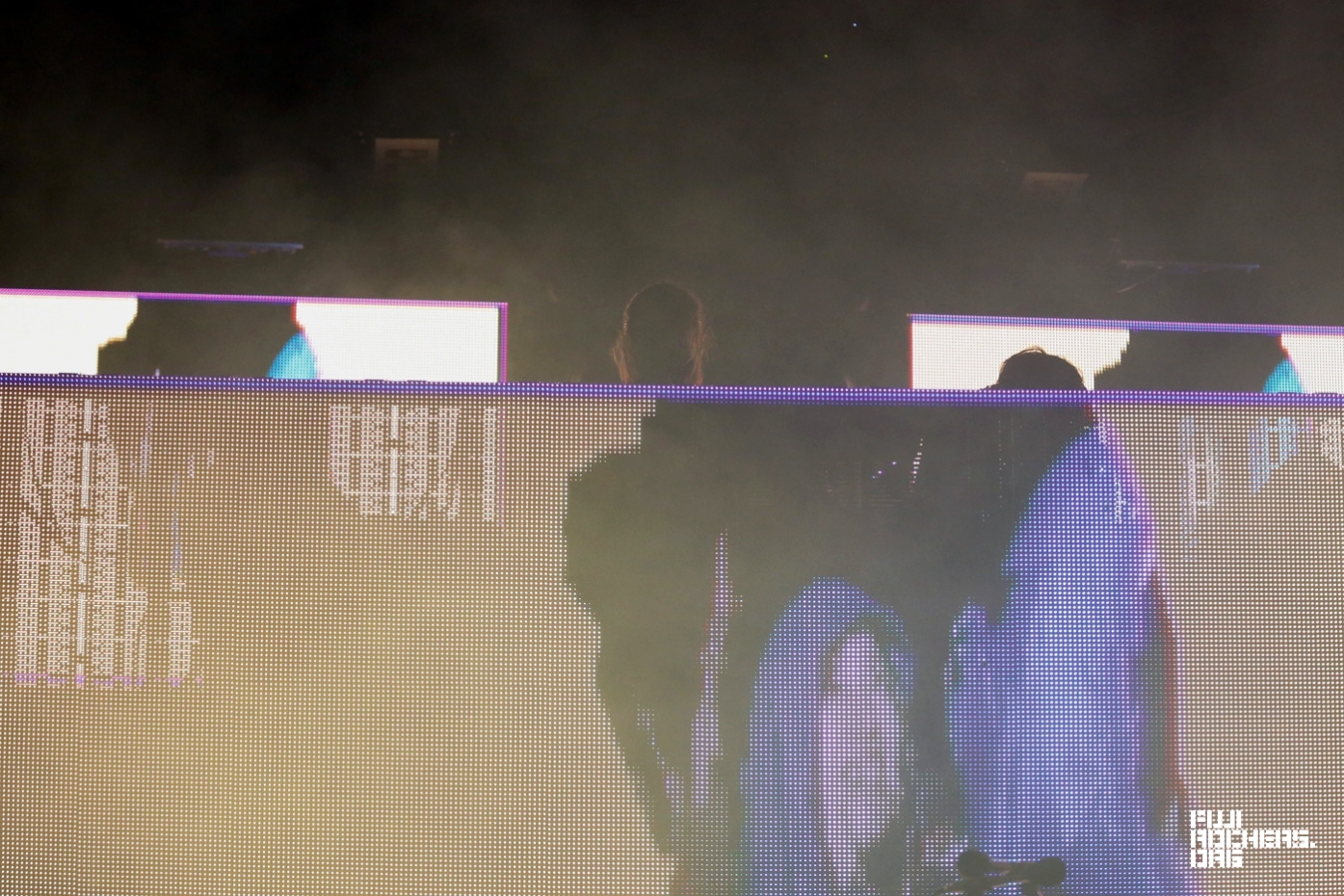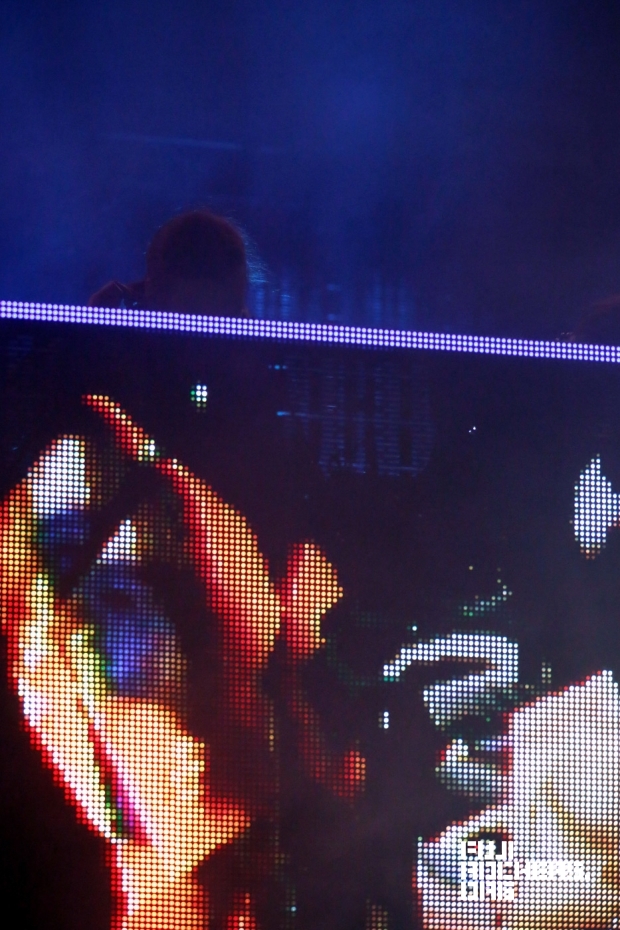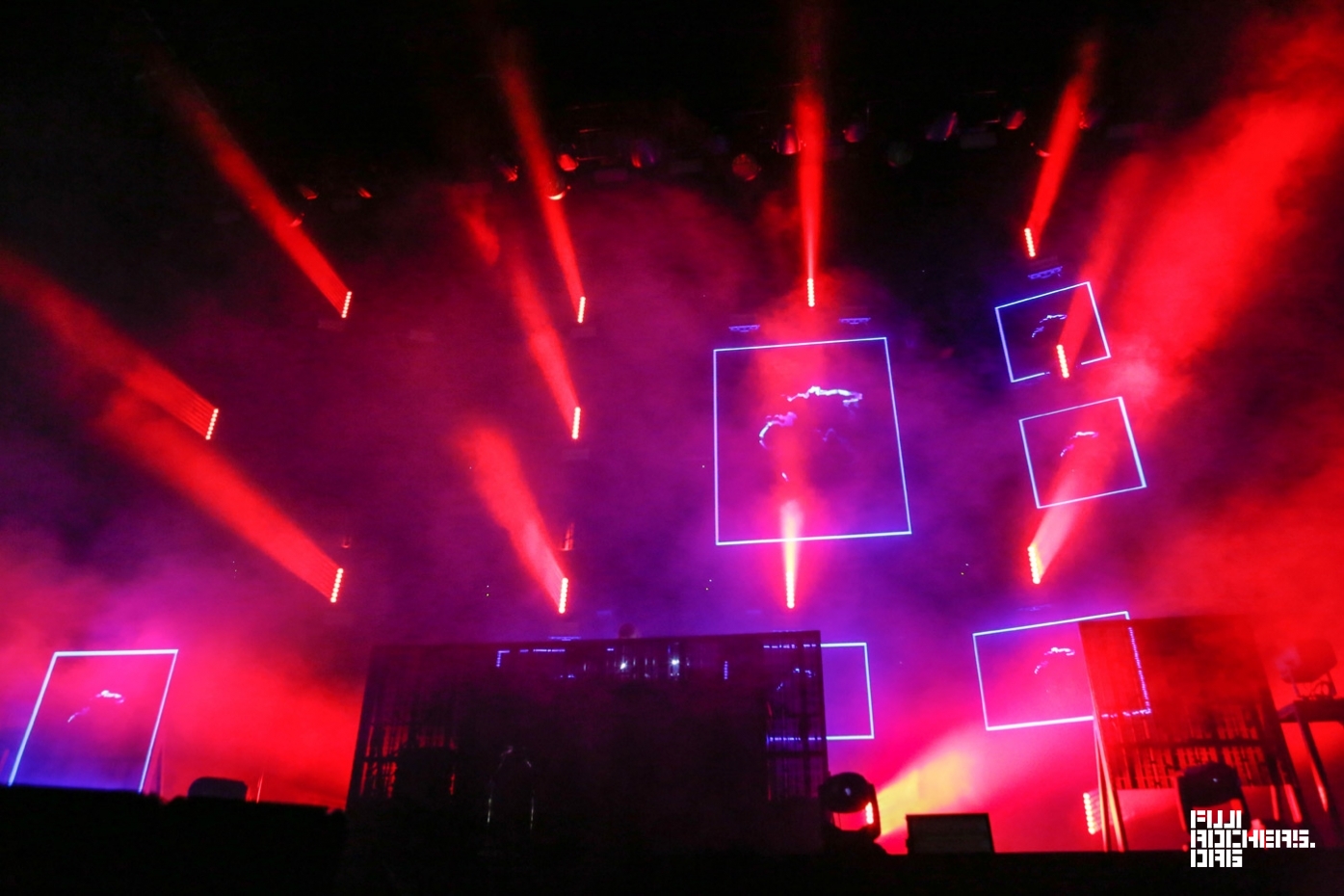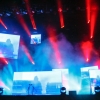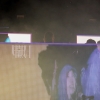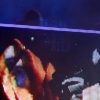APHEX TWIN
No Windowlicker
Aphex Twin has previously been something of an unknown quantity live. Despite his prolific output under a multitude of different guises, Richard D James has remained enigmatic until recently, his work closely guarded and public appearances uncommon. Since the release of Syro two years ago, the retiring sound artist has been more forthcoming both with musical offerings and engaging with the press and public, and so the anticipation of seeing Aphex Twin play the Green Stage was high, if only because no one knew what to expect. What was he going to do for 90 minutes? Wasn’t listening to Aphex Twin for that long going to be hard work? How, more importantly, how does one write about it? Here are some answers: killed it, an absolutely unique pleasure, and lets see.
As the lights came down,the towering Green Stage was bedecked with flashing blue, green and red squares, a map of the world wobbling in and out of focus on the screens to each side. A low grumble rolled from the stage, overlaid with buzzing and segued into a deep bass thump that hinted at AFX-style electronics with echoing synths and bubbly accents. None of this was familiar, none of it a trip down the “greatest hits” route, all of it surprising and yet simultaneously familiar. Throughout the 90-minute set Aphex Twin spun an aural web through hypnotic bass thumps, euphoric house underscored by an ethereal aesthetic, 80s synth and blast beats, synth parps, loops and delays, stuttering CD jams, hard house build ups and drops, submerged keys and air-trembling bass lines. It’s redundant trying to describe it: there aren’t enough adjectives or words left in this report. And it was all building towards something.
Keeping the man out of the picture as much as possible, the computer graphics utilized in the light show were used not only to wow but also to comedic effect. A roving video camera captured the faces of the crowd and showed them up on screen. So far, so normal. But it was the errant Richard D James face superimposed on a member of the crowd that led to bigger and more surreal things. A brief diversion saw Hello Kitty, Kumamon and Tottoro figures spinning on screen, replaced with a lightshow that coincided with a tremendous down pour from the heavens, timed almost perfectly with the stage lights flashing bright white as green lasers flickered through the onslaught on a huge climax of sound from the stage. The crowd reaction was euphoric and few seemed deterred by the inclement weather – perhaps they even felt it rather poetic.
And so we come back to the faces. Interviewed in Pitchfork magazine about this, Richard D James had this to say about the idea: “It came from wanting to show the audience rather than me at gigs, because I don’t want them to see me. I wanted to do gigs where you’ve just got mirrors on the stage, and then you light the crowd so they look at the stage and all they can see is themselves. It’s just like, “There you go, it’s you, you cunts.” [laughs] But they couldn’t do the thing with mirrors, so the compromise was filming the audience and doing face-mapping, so the audience is just looking at themselves, basically.” The basic idea had moved on in this set, with audience faces covered by ghoulish Richard D James masks, which then morphed into celebrities being covered in the same way but by audience faces, as well as having their faces squished by the software. Notable inclusions numbered Bjork, Lorde, Queens of the Stone Age and The XX, among many more. The visuals grew frenetic and culturally specific, a slew of Japanese personalities being victimized, both living and dead – no one was safe – a move that went down well with the Japanese crowd.
This whole time, as the visuals distracted, what had been happening was this: The 90-minute set had slowly softened and manipulated the listener, so that by the end it didn’t seem at all strange that the last ten minutes were effectively a wall of noise. And this is where the choice to eschew classic Aphex Twin tracks was a decision so well made – every festival-goer, from long-term fans to first-time viewers, was brought to the same level and experience – an intense and exhausting journey through a substantial and sensory sonic topography. The adventure was exhilarating, euphoric and ineluctably mesmeric – a show that will likely go down in Fuji Rock history and make some lifetime lists.
Richard D James had this to say about music, and it seems a fitting way to end: “But at the end of the day, it’s all about frequencies and what they do to you. That’s the real core. Forget all the equipment, forget the music, it’s just literally frequencies and the effects on your brain. That’s what’s everyone’s essentially after.”
20,000 brains will never be the same.


